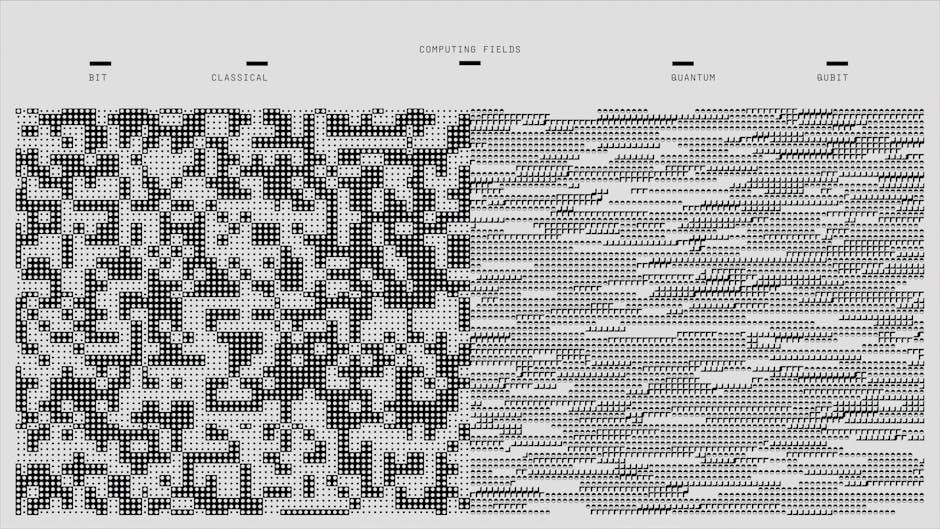
Edge Computing Patterns for Solution Architects: An Overview
This overview delves into edge computing patterns crucial for solution architects. It explores architectural patterns and best practices, moving from basic to end-to-end edge solutions. Industry-specific patterns are unlocked, enabling tailored solutions. Resilient distributed application architectures from hybrid cloud to far edge are covered.
What is Edge Computing?
Edge computing, in essence, is a distributed computing paradigm that brings computation and data storage closer to the data source. Unlike traditional cloud computing, where data is processed in centralized data centers, edge computing performs processing at or near the edge of the network. This proximity reduces latency, optimizes bandwidth usage, and enhances security. It’s particularly beneficial for IoT applications, addressing limitations in cloud-based architectures by enabling real-time data analysis and decision-making closer to the devices generating the data. Different audiences may have varying definitions, but the core concept remains consistent.
The Value Proposition of Edge Computing
Edge computing offers several key advantages. It significantly reduces latency, optimizes bandwidth, enhances security and privacy. These benefits are crucial for modern applications requiring real-time processing and data control, driving its increasing adoption across industries.
Reducing Latency and Improving Performance
Edge computing drastically reduces latency by processing data closer to the source, minimizing the round-trip time to centralized servers. This proximity enhances application performance, particularly for latency-sensitive applications like autonomous vehicles, augmented reality, and industrial automation. Real-time decision-making and faster response times are enabled, improving user experience and operational efficiency. The elimination of network bottlenecks further contributes to improved performance and reliability, making edge computing ideal for demanding scenarios.
Bandwidth Optimization and Cost Savings
Edge computing significantly optimizes bandwidth usage by processing data locally and sending only relevant information to the cloud or central servers. This reduces the amount of data transmitted, leading to substantial cost savings on network infrastructure and bandwidth consumption. Organizations can avoid expensive upgrades to network capacity. By minimizing data transfer, edge computing also decreases the risk of network congestion, ensuring reliable data delivery while controlling operational expenses. This is particularly beneficial for IoT deployments with numerous devices generating vast amounts of data.
Enhanced Security and Privacy
Edge computing enhances security and privacy by processing sensitive data closer to the source, minimizing the risk of exposure during transmission to centralized servers. This localized processing reduces the attack surface, making it more difficult for malicious actors to intercept or compromise data. Furthermore, edge deployments can be configured to comply with stringent data privacy regulations, ensuring that sensitive information remains within defined geographical boundaries. The ability to encrypt and anonymize data at the edge adds an extra layer of protection, safeguarding user privacy and organizational assets from potential breaches and compliance violations.

Edge Computing Architecture
Edge computing architecture involves distributed systems that process data near the source. Key aspects include edge-cloud integration and resilient application design. Solution architects leverage various architectural patterns to optimize performance, security, and scalability in edge deployments.
Core Components of Edge Computing Solutions
The core components of edge computing solutions involve specialized hardware and software elements working together to process data closer to the source. These include edge devices like sensors, gateways, and servers, along with the necessary software for data processing, storage, and communication. Efficient resource management, security protocols, and reliable connectivity are vital for successful edge implementation. Understanding these components allows solution architects to design robust and scalable edge solutions tailored to specific use cases and industry needs, ensuring optimal performance and data security;
Edge-Cloud Integration
Edge-cloud integration is pivotal for effective edge computing solutions, enabling seamless data flow and management between edge devices and the cloud. This integration involves establishing reliable communication channels, data synchronization mechanisms, and centralized management capabilities. It allows for leveraging the cloud’s extensive resources for tasks like data analytics, model training, and long-term storage, while capitalizing on the edge’s low latency and real-time processing capabilities. Successful edge-cloud integration requires careful consideration of security, scalability, and data consistency to ensure a robust and efficient overall system architecture for solution architects.
Resilient Distributed Application Architectures
Resilient distributed application architectures are vital in edge computing, ensuring continuous operation and data availability even in the face of failures. These architectures leverage redundancy, fault tolerance, and self-healing mechanisms to maintain system stability. Key principles include data replication across multiple edge nodes, automated failover procedures, and distributed consensus algorithms. Architectures must handle intermittent connectivity, resource constraints, and diverse edge environments. By implementing these strategies, solution architects can create robust and reliable edge applications capable of withstanding unforeseen disruptions, ensuring high availability and data integrity in distributed edge deployments.
Edge Computing Deployment Strategies
Edge computing deployment strategies encompass various approaches to placing computing resources closer to the data source. These strategies include on-premise, network edge, and hybrid cloud configurations. Each strategy offers unique advantages and considerations for solution architects when implementing edge solutions.
On-Premise Edge Deployment
On-premise edge deployment involves placing edge computing resources within the physical boundaries of an organization’s facilities. This strategy offers enhanced control over data security and privacy, as data processing occurs locally. It is suitable for scenarios requiring ultra-low latency and high availability, such as industrial automation and real-time analytics. Solution architects must consider factors like infrastructure costs, maintenance, and scalability when implementing on-premise edge solutions. Modern automated design systems aid in efficient and cost-effective creation.
Network Edge Deployment
Network edge deployment positions computing resources closer to the end-users or data sources, typically within the service provider’s network. This approach reduces latency and improves application performance by minimizing the distance data travels. It is often utilized for content delivery networks (CDNs), mobile edge computing (MEC), and other applications benefiting from proximity. Solution architects designing network edge solutions must consider factors like network bandwidth, security, and management complexities. The ETSI MEC initiative considers a broad range of applications and architecture scenarios.
Hybrid Cloud to Far Edge Configurations
Hybrid cloud to far edge configurations represent a distributed computing architecture where workloads are strategically placed across a spectrum of environments, from centralized cloud data centers to the extreme edge. This approach leverages the strengths of each environment, with the cloud providing scalability and management while the edge offers low latency and local processing. Solution architects designing these configurations must carefully consider data synchronization, security, and application deployment strategies. Resilient distributed application architectures must be learned to scale edge solutions.

Edge Computing Solution Archetypes
Edge computing solution archetypes range from basic to advanced and end-to-end architectures. Understanding these archetypes is crucial for solution architects. This knowledge enables them to design scalable, resilient, and secure intelligent IoT solutions effectively, tailoring them to specific needs.
Basic Edge Architectures
Basic edge architectures represent the foundational level of edge computing deployments. These architectures often involve simple data processing and filtering at the edge, closer to the data source. They are typically used in scenarios where minimal latency and reduced bandwidth consumption are required. Basic setups might include local data aggregation and preliminary analysis before transmitting data to the cloud for further processing. This approach provides a cost-effective solution for applications with straightforward requirements, focusing on essential functionalities at the edge.
Advanced Edge Architectures
Advanced edge architectures incorporate more sophisticated processing capabilities at the edge, enabling real-time analytics and decision-making. These setups often involve machine learning models deployed directly on edge devices, facilitating rapid response times and enhanced autonomy. They feature complex event processing, data stream analytics, and integration with multiple data sources. This level of architecture supports use cases requiring high performance, such as predictive maintenance, autonomous vehicles, and advanced robotics, where immediate insights and actions are critical for operational efficiency.
End-to-End Edge Architectures
End-to-end edge architectures represent a comprehensive approach, spanning from data generation at the edge to centralized cloud management. These architectures ensure seamless data flow and processing across all tiers, encompassing edge devices, edge servers, and cloud infrastructure. They emphasize robust security, scalability, and manageability, providing a holistic solution for complex IoT deployments. End-to-end architectures enable centralized monitoring, remote management, and unified analytics, crucial for applications like smart cities, large-scale industrial automation, and nationwide connected healthcare systems, optimizing overall system performance and reliability.

Industry-Specific Edge Computing Patterns
Industry-specific edge computing patterns tailor solutions for unique sector needs. These patterns address distinct requirements, such as low latency in automotive or data privacy in healthcare. By understanding these nuances, architects can design optimized, effective edge deployments for each industry.
Manufacturing
In manufacturing, edge computing enables real-time data processing on the factory floor, reducing latency and improving performance for critical applications. Predictive maintenance, quality control, and robotic automation benefit from edge’s proximity to data sources. Edge solutions can analyze sensor data from equipment, identify anomalies, and trigger alerts for proactive maintenance. This minimizes downtime, optimizes production processes, and enhances overall efficiency in manufacturing environments by leveraging real-time insights.
Healthcare
Edge computing transforms healthcare by enabling real-time data processing at the point of care, enhancing patient monitoring and diagnostics. Remote patient monitoring devices benefit from edge analytics, providing timely alerts and personalized interventions. Edge solutions support telemedicine applications, ensuring seamless communication and data sharing between healthcare providers and patients. Reduced latency and improved security are crucial for handling sensitive patient data, making edge computing a valuable asset in modern healthcare environments, enabling faster response times and better patient outcomes.
Automotive (V2X)
Edge computing is pivotal in automotive Vehicle-to-Everything (V2X) communication, enabling real-time data exchange between vehicles, infrastructure, and pedestrians. Edge servers process sensor data locally, reducing latency for critical safety applications like collision avoidance. Clustering and edge analysis enhance the reliability of V2X systems. Modern automated design systems aid in creating efficient and cost-effective automotive solutions. Edge computing supports autonomous driving by providing the necessary computational power for rapid decision-making, improving road safety and traffic management in vehicular networks, minimizing delays and maximizing overall efficiency.

Best Practices for Implementing Edge Computing Solutions
Implementing edge solutions requires careful consideration of scalability, security, and resiliency. Proven archetypes and tested-at-scale patterns from real-world deployments are essential. Modern architectural patterns ensure secure and intelligent IoT solutions, with a focus on industry standards and best practices.
Scalability
Achieving scalability in edge computing solutions necessitates a deep understanding of architectural patterns. These patterns must accommodate increasing data volumes and user demands. Solution architects should leverage proven archetypes for real-world success, ensuring the edge infrastructure can adapt dynamically. Scalable solutions are crucial for industries like manufacturing and healthcare where data generation is continuous and expanding. Modern automated design systems play a vital role in creating efficient and cost-effective scalable architectures, addressing the evolving needs of edge environments.
Security
Security in edge computing demands robust measures against cyber-physical attacks. A hierarchical model for microcontroller-based systems is essential. Protecting data at the edge requires careful consideration of architecture and implementation. Scalable, resilient, and secure intelligent IoT solutions built for manufacturing and other industries need modern architectural patterns. Implementing best practices and tested-at-scale patterns by leading companies worldwide are essential. Secure edge computing environments are vital for maintaining data integrity and protecting sensitive information from unauthorized access and cyber threats.
Resiliency
Resiliency in edge computing architectures is paramount for uninterrupted operation. Edge solutions must withstand failures and maintain functionality. Resilient distributed application architectures, spanning from hybrid cloud to far edge, are critical. Implementing modern architectural patterns ensures scalability and resilience. Edge systems need to self-heal and adapt to changing conditions. Proven archetypes enhance real-world success. Robustness is achieved through redundancy, fault tolerance, and automated recovery mechanisms. These ensure continuous service delivery and prevent data loss in the event of disruptions, which are essential for edge computing environments.

Edge Computing and IoT
Edge computing enhances IoT by processing data closer to devices. This reduces latency and bandwidth usage, crucial for real-time applications. Solution architects must understand how to integrate edge with IoT for optimal performance and efficiency. It is an important aspect.
Integrating Edge Computing with IoT Devices
Integrating edge computing with IoT devices involves strategic placement of processing power. This aims to minimize latency and maximize data insights. Architects must design solutions that enable local data analysis on IoT devices. This reduces the need for constant cloud communication. Edge servers can filter and aggregate data before transmission, optimizing bandwidth. Security considerations are paramount, ensuring data privacy and device integrity. Scalability is also essential to accommodate growing IoT deployments with different architecture patterns.

Cloud-Out vs. Edge-In Strategies
Cloud-out and edge-in strategies present distinct approaches. Architects must strategically decide based on application needs. Cloud-out extends existing cloud infrastructure. Edge-in prioritizes processing data closer to its source. Understanding the trade-offs is vital for optimal deployment.
Making Strategic Decisions
Strategic decisions regarding cloud-out versus edge-in require careful consideration. Architects must evaluate latency requirements, bandwidth constraints, and security considerations. Understanding data gravity and processing needs is paramount. Cloud-out leverages existing cloud infrastructure, while edge-in focuses on localized processing. Cost analysis, including infrastructure and operational expenses, plays a crucial role. Compliance requirements and data sovereignty concerns also influence the decision-making process. Ultimately, the choice depends on aligning the architecture with specific business goals and technical constraints, ensuring optimal performance and cost-effectiveness for the application.

The Role of Solution Architects in Edge Computing
Solution architects play a pivotal role in edge computing. They design and implement edge solutions, considering architectural patterns and industry best practices. They navigate cloud-out versus edge-in strategies, ensuring scalable, resilient, and secure intelligent IoT solutions aligned with business goals.
Designing and Implementing Edge Solutions
Designing and implementing edge solutions involves selecting appropriate architectural patterns based on specific use cases and requirements. Solution architects must consider factors like latency, bandwidth, security, and scalability. They leverage industry-standard patterns and best practices to build robust and efficient edge deployments. This process includes defining edge-cloud integration strategies, choosing suitable hardware and software components, and ensuring seamless data flow between the edge and the cloud. Furthermore, architects address non-functional requirements to unlock the potential of standard edge components.

Cyber-Physical Attack Protection in Edge Systems
Protecting edge systems from cyber-physical attacks requires a hierarchical model. This model safeguards microcontroller-based systems. Modern automated design systems aid in creating secure, efficient solutions. Security must be a priority in edge solution design and implementation.
Hierarchical Model for Microcontroller-Based Systems
The hierarchical model provides a structured approach to designing secure microcontroller-based systems against cyber-physical attacks within edge computing environments. It allows for layered security implementations, starting from the hardware level and extending to the application layer. This defense-in-depth strategy ensures robust protection against various attack vectors. Modern automated design systems contribute to creating accurate and cost-effective solutions within this hierarchical framework, offering enhanced security and resilience. The model aids in identifying vulnerabilities and implementing targeted security measures at each level.
